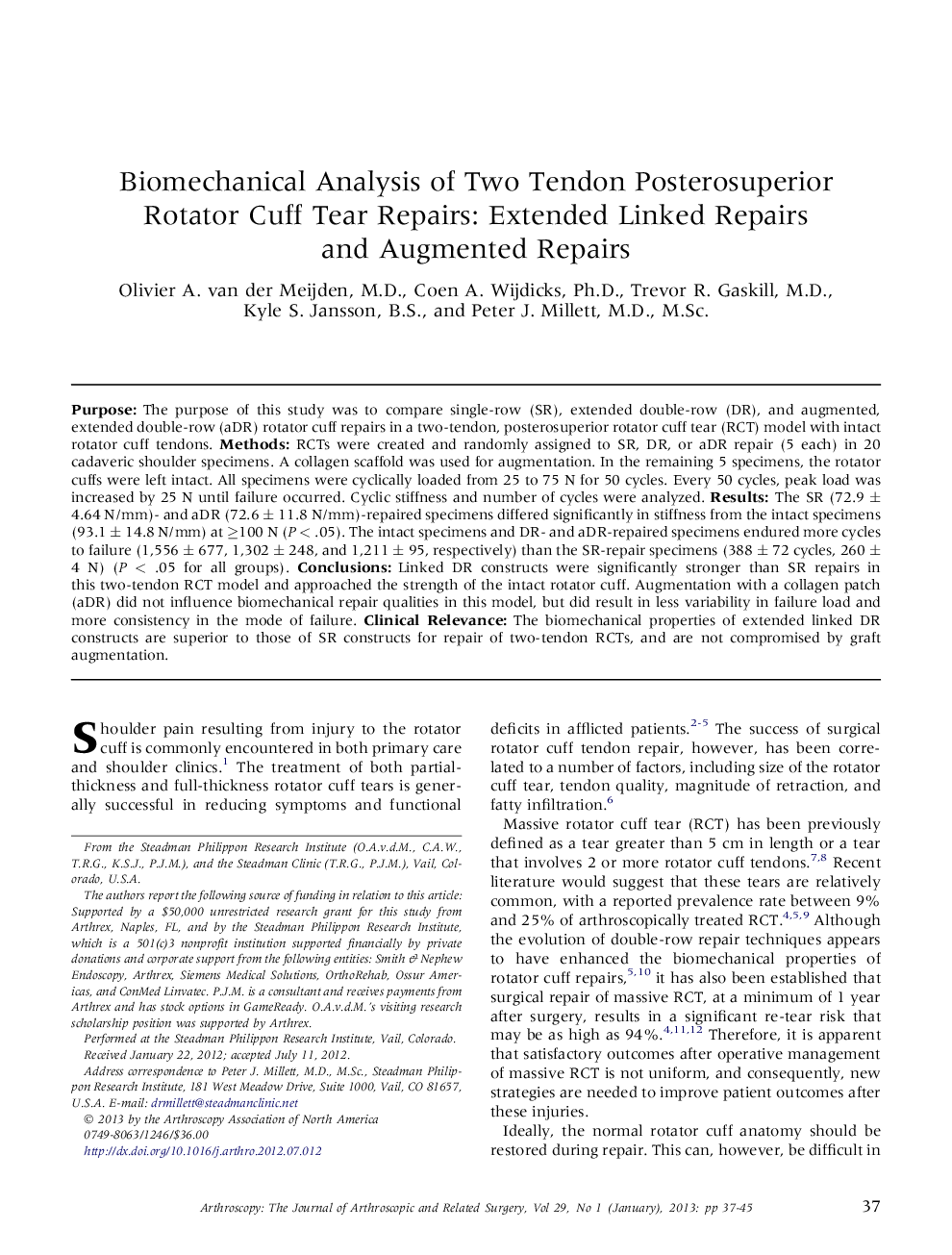| Article ID | Journal | Published Year | Pages | File Type |
|---|---|---|---|---|
| 4043960 | Arthroscopy: The Journal of Arthroscopic & Related Surgery | 2013 | 9 Pages |
PurposeThe purpose of this study was to compare single-row (SR), extended double-row (DR), and augmented, extended double-row (aDR) rotator cuff repairs in a two-tendon, posterosuperior rotator cuff tear (RCT) model with intact rotator cuff tendons.MethodsRCTs were created and randomly assigned to SR, DR, or aDR repair (5 each) in 20 cadaveric shoulder specimens. A collagen scaffold was used for augmentation. In the remaining 5 specimens, the rotator cuffs were left intact. All specimens were cyclically loaded from 25 to 75 N for 50 cycles. Every 50 cycles, peak load was increased by 25 N until failure occurred. Cyclic stiffness and number of cycles were analyzed.ResultsThe SR (72.9 ± 4.64 N/mm)- and aDR (72.6 ± 11.8 N/mm)-repaired specimens differed significantly in stiffness from the intact specimens (93.1 ± 14.8 N/mm) at ≥100 N (P < .05). The intact specimens and DR- and aDR-repaired specimens endured more cycles to failure (1,556 ± 677, 1,302 ± 248, and 1,211 ± 95, respectively) than the SR-repair specimens (388 ± 72 cycles, 260 ± 4 N) (P < .05 for all groups).ConclusionsLinked DR constructs were significantly stronger than SR repairs in this two-tendon RCT model and approached the strength of the intact rotator cuff. Augmentation with a collagen patch (aDR) did not influence biomechanical repair qualities in this model, but did result in less variability in failure load and more consistency in the mode of failure.Clinical RelevanceThe biomechanical properties of extended linked DR constructs are superior to those of SR constructs for repair of two-tendon RCTs, and are not compromised by graft augmentation.
